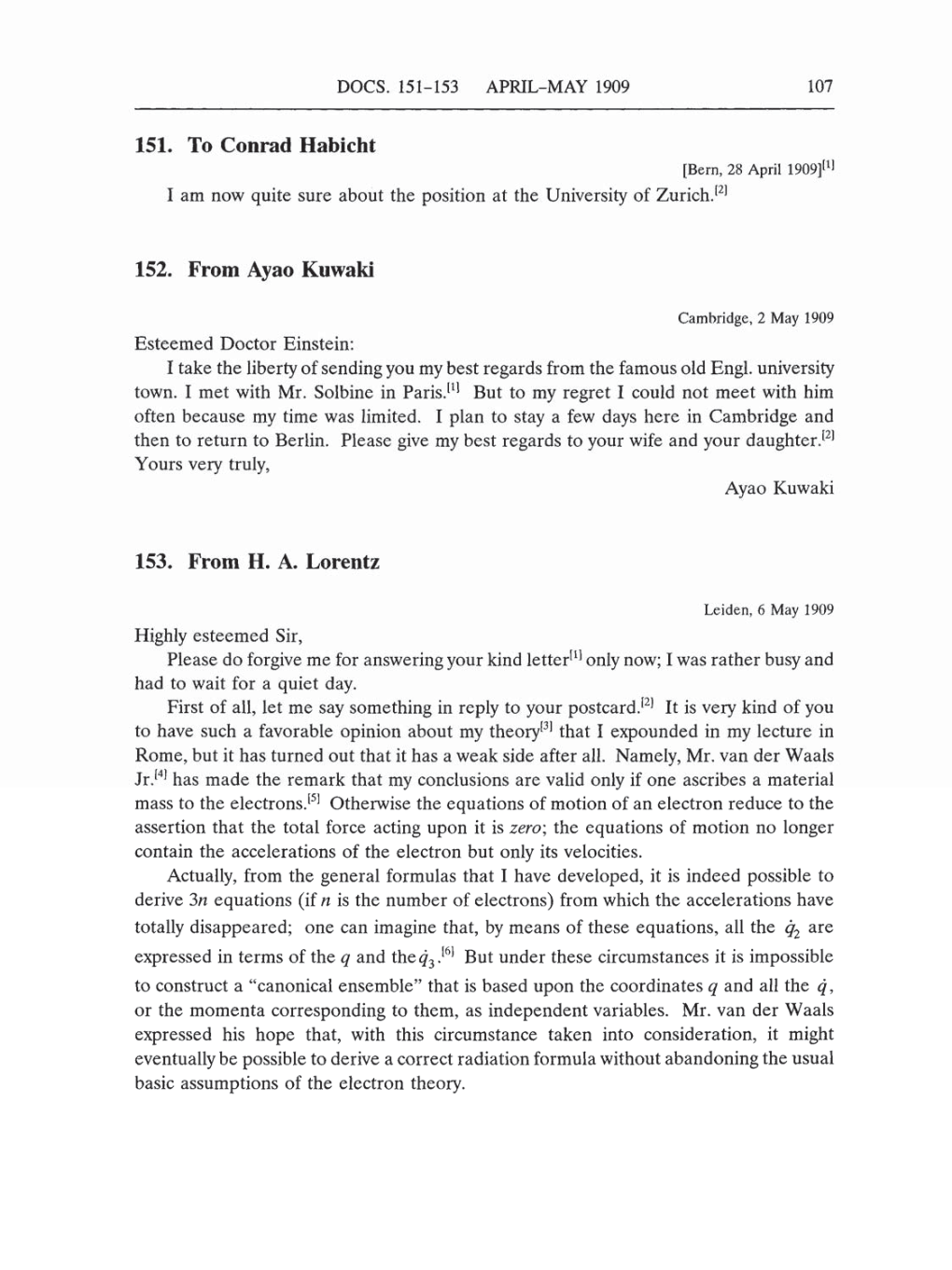DOCS.
151-153
APRIL-MAY
1909 107
151.
To
Conrad Habicht
[Bern,
28
April
1909][1]
I
am
now
quite
sure
about the
position
at the
University
of
Zurich.[2]
152.
From
Ayao
Kuwaki
Cambridge,
2
May
1909
Esteemed Doctor Einstein:
I take the
liberty
of
sending you my
best
regards
from the
famous
old
Engl, university
town. I met
with Mr. Solbine in
Paris.[1]
But
to
my
regret
I could not meet with him
often because
my
time
was
limited. I
plan to
stay
a
few
days
here
in
Cambridge
and
then
to return to Berlin. Please
give my
best
regards
to
your
wife and
your
daughter.[2]
Yours
very truly,
Ayao
Kuwaki
153.
From
H.
A.
Lorentz
Leiden, 6
May
1909
Highly
esteemed
Sir,
Please
do
forgive
me
for
answering your
kind
letter[1]
only
now; I
was
rather
busy
and
had
to
wait
for
a
quiet
day.
First of
all,
let
me
say
something
in
reply
to
your
postcard.[2]
It
is
very
kind
of
you
to
have such
a
favorable
opinion
about
my
theory[3]
that
I expounded
in
my
lecture in
Rome,
but
it has
turned
out
that
it has
a
weak
side
after
all.
Namely,
Mr.
van
der
Waals
Jr.[4]
has
made the remark that
my
conclusions
are
valid
only
if
one
ascribes
a
material
mass
to
the
electrons.[5]
Otherwise the
equations
of motion of
an
electron reduce
to
the
assertion that the total
force
acting
upon
it
is
zero;
the
equations
of motion
no
longer
contain the accelerations of
the
electron but
only
its velocities.
Actually,
from
the
general
formulas that
I have
developed,
it
is
indeed
possible
to
derive
3n
equations
(if n
is
the number of
electrons)
from which
the accelerations
have
totally
disappeared;
one can imagine
that,
by means
of these
equations,
all the
q2
are
expressed
in terms
of the
q
and
the
q3)[6]
But
under these
circumstances
it
is
impossible
to
construct
a
"canonical ensemble" that
is
based
upon
the
coordinates
q
and all
the
q,
or
the momenta
corresponding
to them,
as
independent
variables.
Mr.
van
der
Waals
expressed
his
hope
that,
with this
circumstance taken
into
consideration,
it
might
eventually
be
possible
to derive
a
correct
radiation
formula
without
abandoning
the usual
basic
assumptions
of the
electron
theory.
